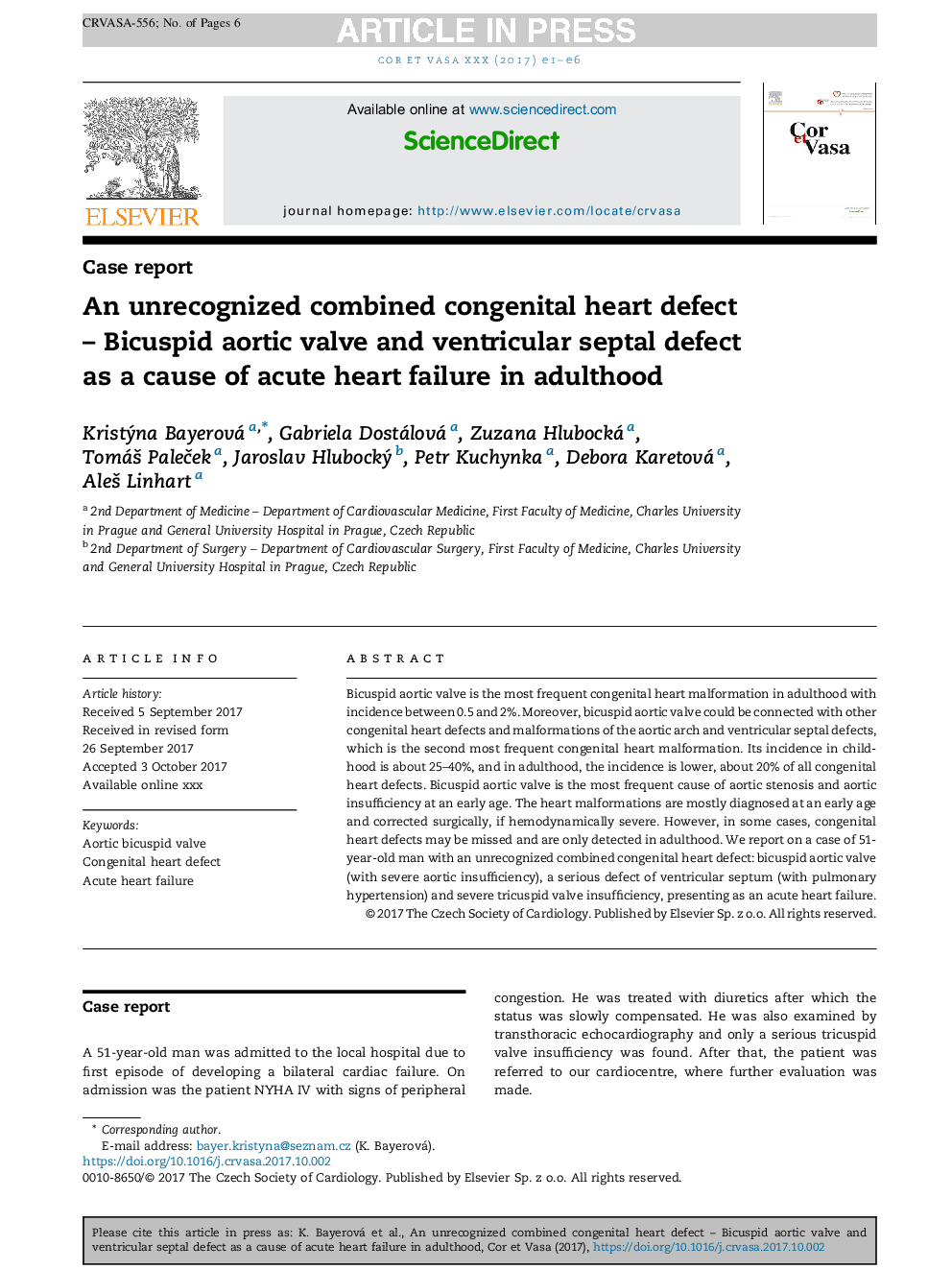| Article ID | Journal | Published Year | Pages | File Type |
|---|---|---|---|---|
| 11010493 | Cor et Vasa | 2018 | 6 Pages |
Abstract
Bicuspid aortic valve is the most frequent congenital heart malformation in adulthood with incidence between 0.5 and 2%. Moreover, bicuspid aortic valve could be connected with other congenital heart defects and malformations of the aortic arch and ventricular septal defects, which is the second most frequent congenital heart malformation. Its incidence in childhood is about 25-40%, and in adulthood, the incidence is lower, about 20% of all congenital heart defects. Bicuspid aortic valve is the most frequent cause of aortic stenosis and aortic insufficiency at an early age. The heart malformations are mostly diagnosed at an early age and corrected surgically, if hemodynamically severe. However, in some cases, congenital heart defects may be missed and are only detected in adulthood. We report on a case of 51-year-old man with an unrecognized combined congenital heart defect: bicuspid aortic valve (with severe aortic insufficiency), a serious defect of ventricular septum (with pulmonary hypertension) and severe tricuspid valve insufficiency, presenting as an acute heart failure.
Related Topics
Health Sciences
Medicine and Dentistry
Cardiology and Cardiovascular Medicine
Authors
Kristýna Bayerová, Gabriela Dostálová, Zuzana Hlubocká, TomáÅ¡ PaleÄek, Jaroslav Hlubocký, Petr Kuchynka, Debora Karetová, AleÅ¡ Linhart,
